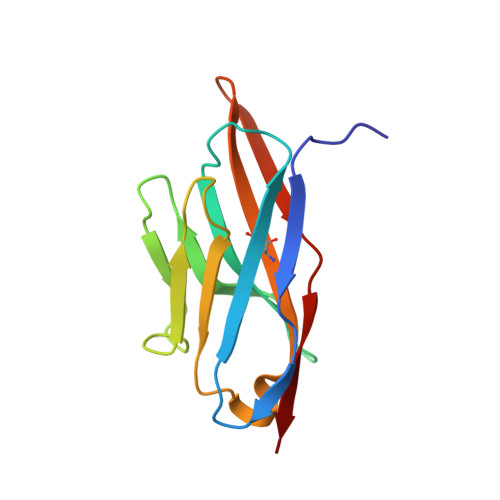Structural basis for selectivity and antagonism in extracellular GPCR-nanobodies.
Schlimgen, R.R., Peterson, F.C., Heukers, R., Smit, M.J., McCorvy, J.D., Volkman, B.F.(2024) Nat Commun 15: 4611-4611
- PubMed: 38816420
- DOI: https://doi.org/10.1038/s41467-024-49000-x
- Primary Citation of Related Structures:
8UEK - PubMed Abstract:
G protein-coupled receptors (GPCRs) are pivotal therapeutic targets, but their complex structure poses challenges for effective drug design. Nanobodies, or single-domain antibodies, have emerged as a promising therapeutic strategy to target GPCRs, offering advantages over traditional small molecules and antibodies. However, an incomplete understanding of the structural features enabling GPCR-nanobody interactions has limited their development. In this study, we investigate VUN701, a nanobody antagonist targeting the atypical chemokine receptor 3 (ACKR3). We determine that an extended CDR3 loop is required for ACKR3 binding. Uncommon in most nanobodies, an extended CDR3 is prevalent in GPCR-targeting nanobodies. Combining experimental and computational approaches, we map an inhibitory ACKR3-VUN701 interface and define a distinct conformational mechanism for GPCR inactivation. Our results provide insights into class A GPCR-nanobody selectivity and suggest a strategy for the development of these new therapeutic tools.
Organizational Affiliation:
Department of Biochemistry, Medical College of Wisconsin, Milwaukee, WI, 53226, USA.














